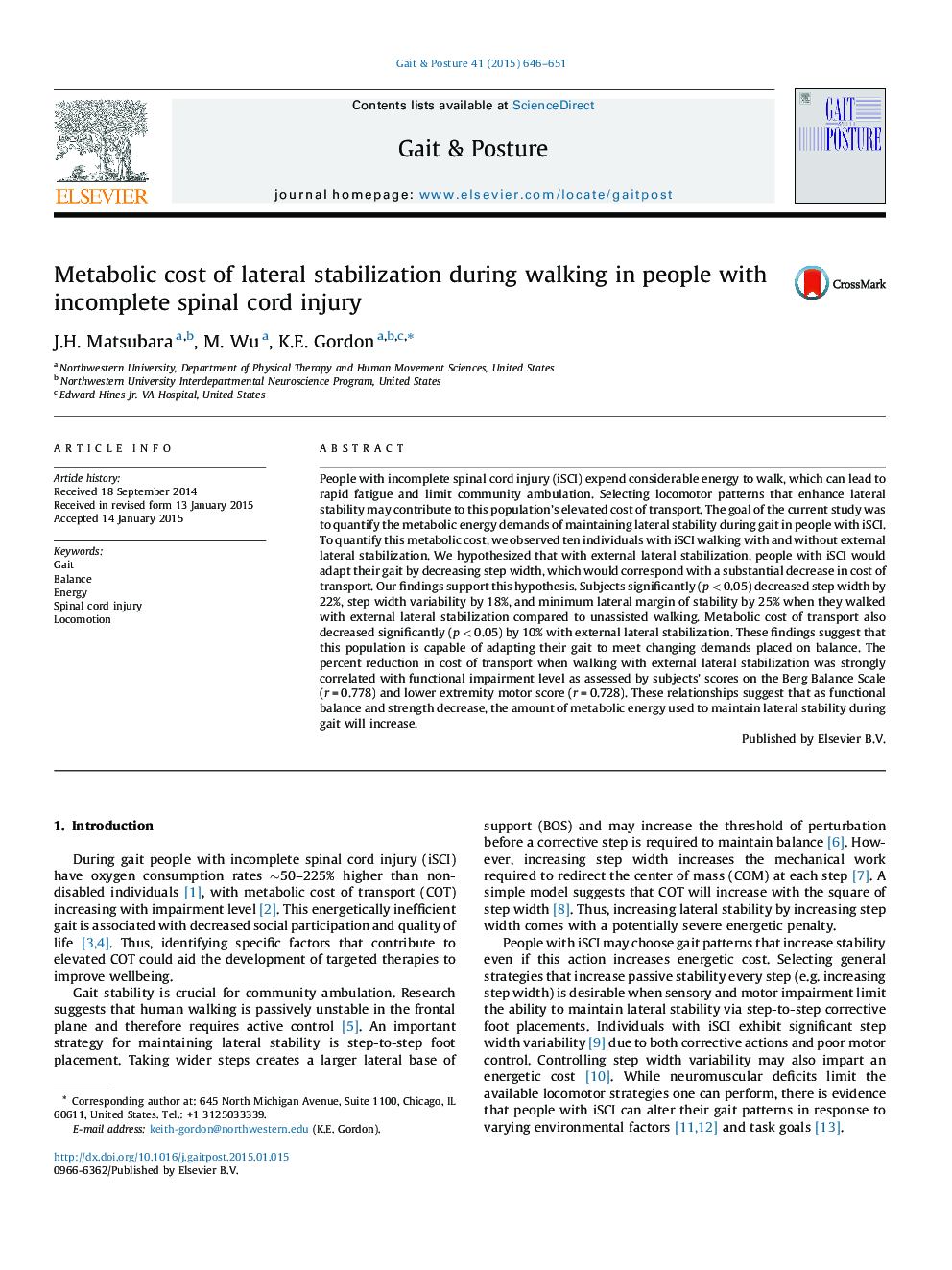| کد مقاله | کد نشریه | سال انتشار | مقاله انگلیسی | نسخه تمام متن |
|---|---|---|---|---|
| 6206178 | 1265640 | 2015 | 6 صفحه PDF | دانلود رایگان |
- People with iSCI use substantial energy to laterally stabilize during gait.
- Metabolic energy required for lateral stabilization increased with impairment.
- When provided with external lateral stabilization people with iSCI decrease step width.
People with incomplete spinal cord injury (iSCI) expend considerable energy to walk, which can lead to rapid fatigue and limit community ambulation. Selecting locomotor patterns that enhance lateral stability may contribute to this population's elevated cost of transport. The goal of the current study was to quantify the metabolic energy demands of maintaining lateral stability during gait in people with iSCI. To quantify this metabolic cost, we observed ten individuals with iSCI walking with and without external lateral stabilization. We hypothesized that with external lateral stabilization, people with iSCI would adapt their gait by decreasing step width, which would correspond with a substantial decrease in cost of transport. Our findings support this hypothesis. Subjects significantly (p < 0.05) decreased step width by 22%, step width variability by 18%, and minimum lateral margin of stability by 25% when they walked with external lateral stabilization compared to unassisted walking. Metabolic cost of transport also decreased significantly (p < 0.05) by 10% with external lateral stabilization. These findings suggest that this population is capable of adapting their gait to meet changing demands placed on balance. The percent reduction in cost of transport when walking with external lateral stabilization was strongly correlated with functional impairment level as assessed by subjects' scores on the Berg Balance Scale (r = 0.778) and lower extremity motor score (r = 0.728). These relationships suggest that as functional balance and strength decrease, the amount of metabolic energy used to maintain lateral stability during gait will increase.
Journal: Gait & Posture - Volume 41, Issue 2, February 2015, Pages 646-651
